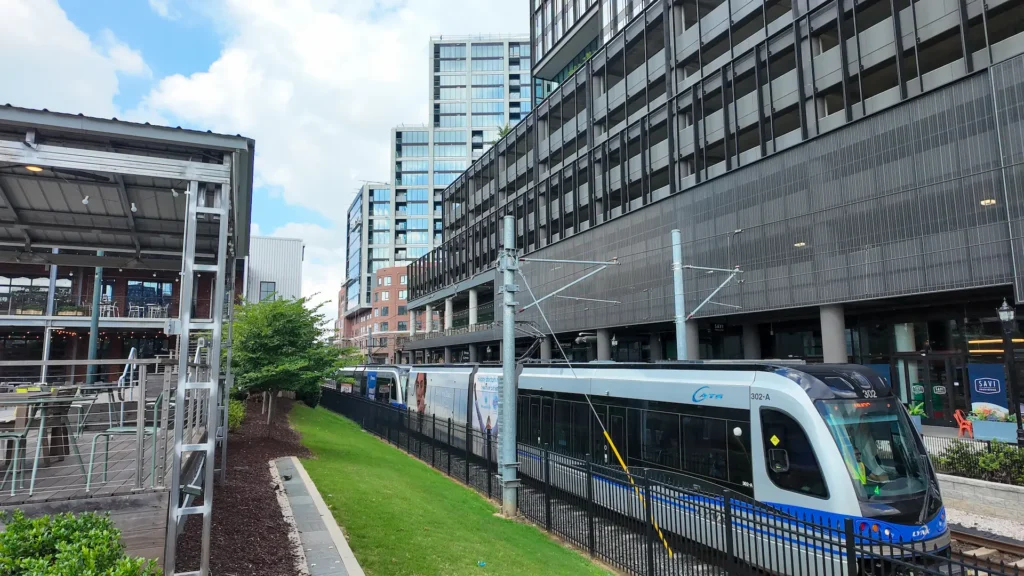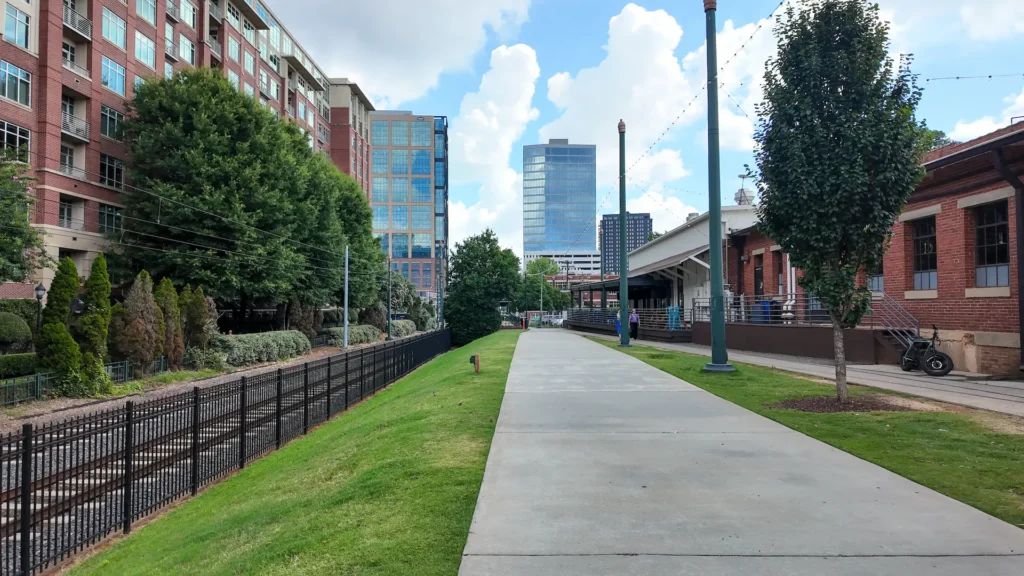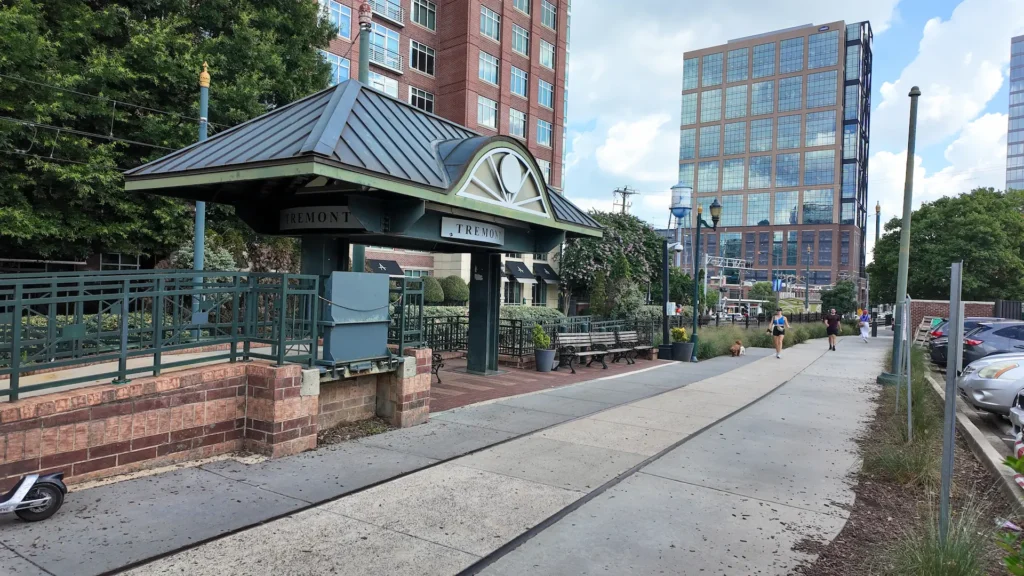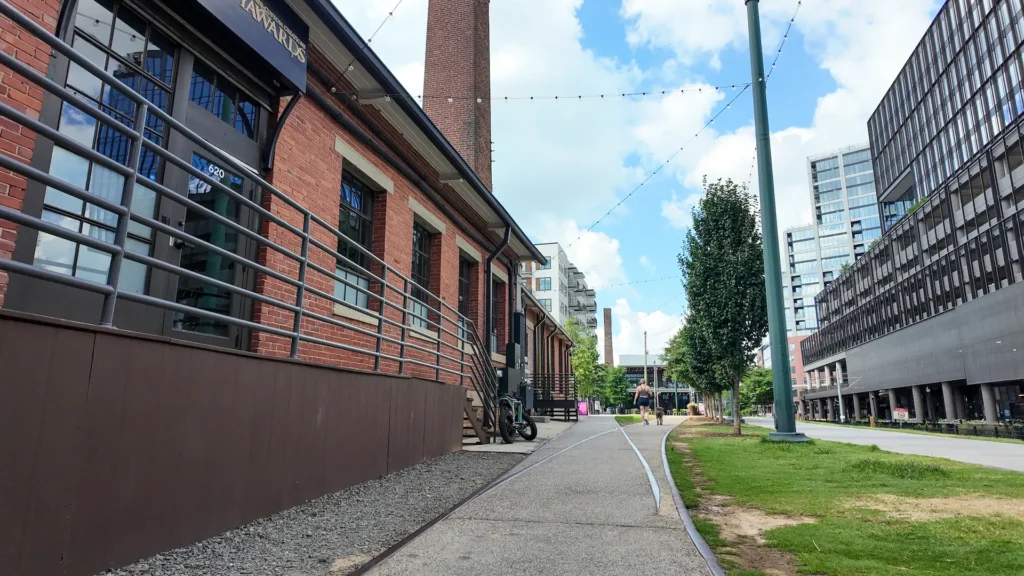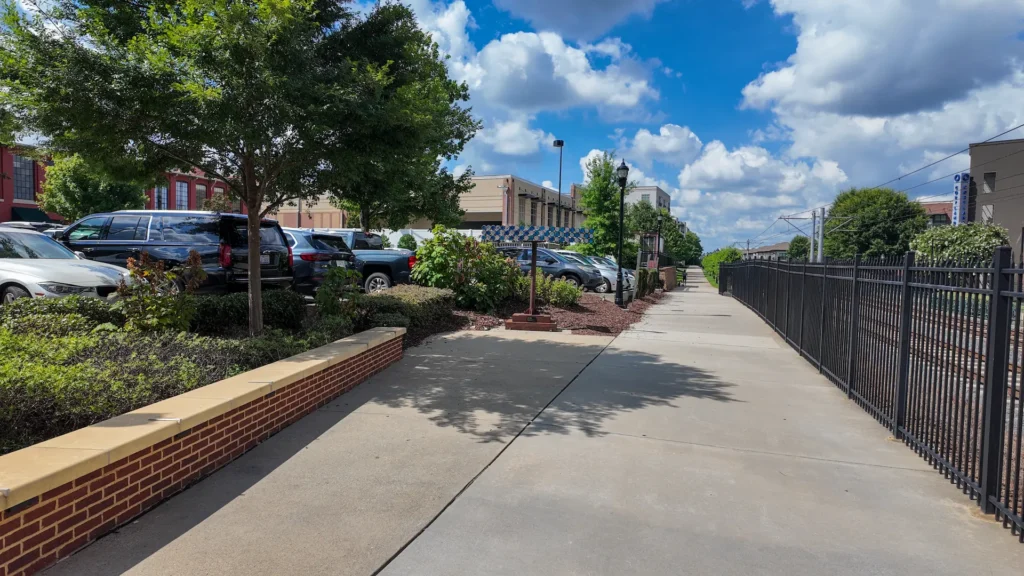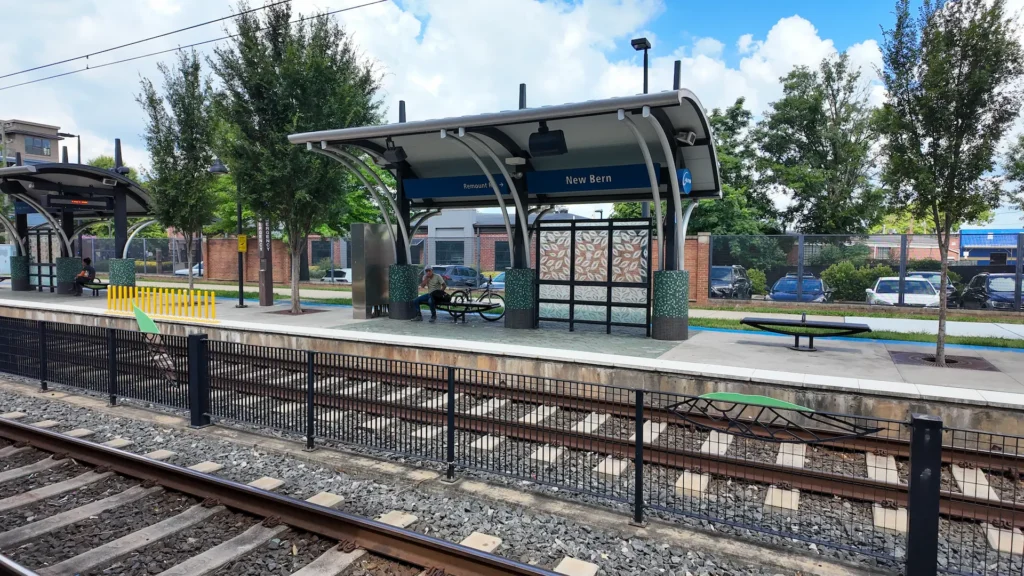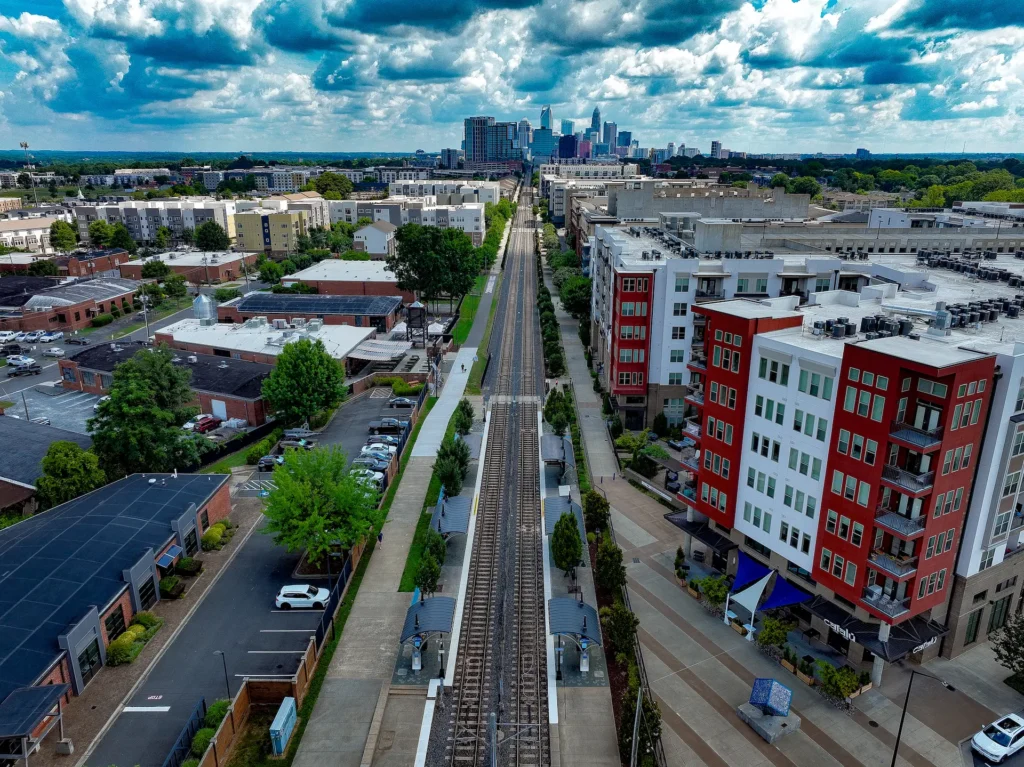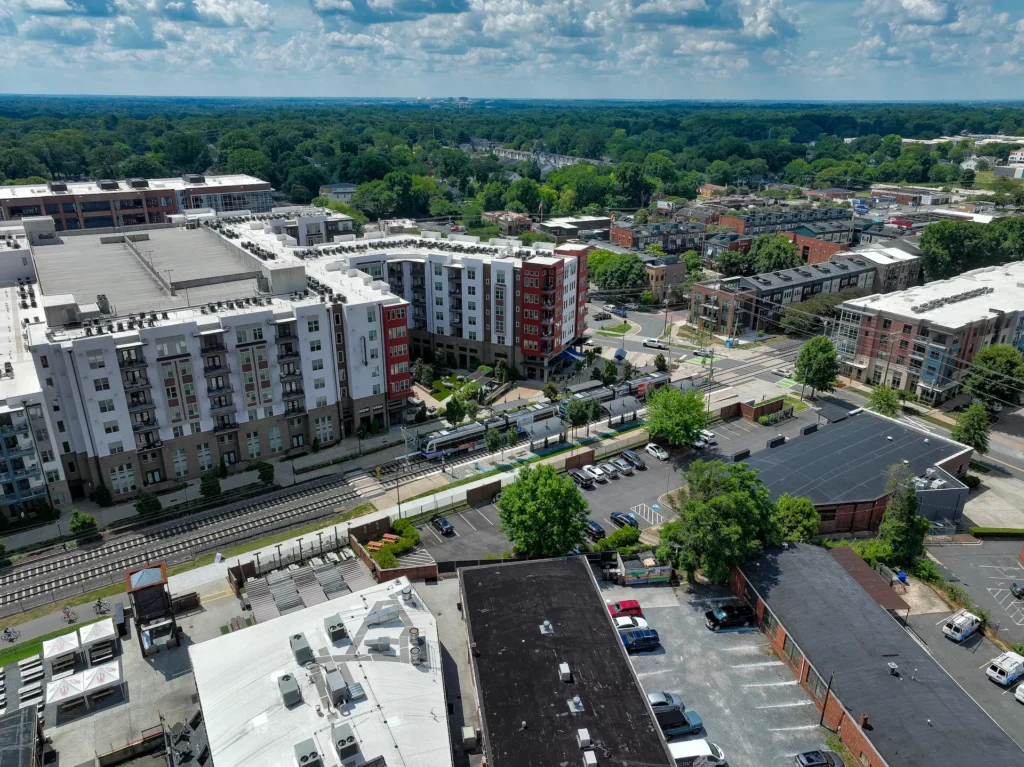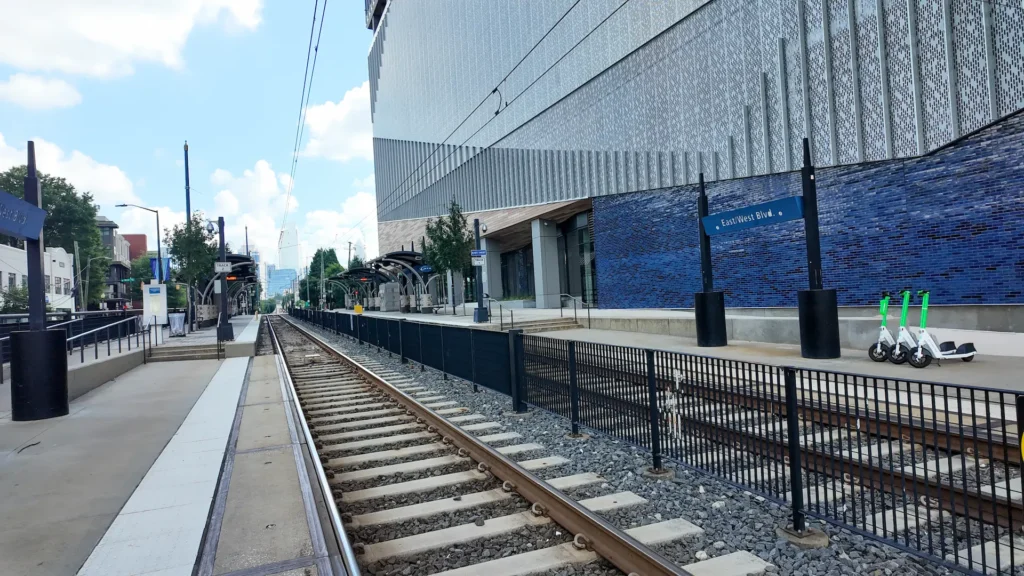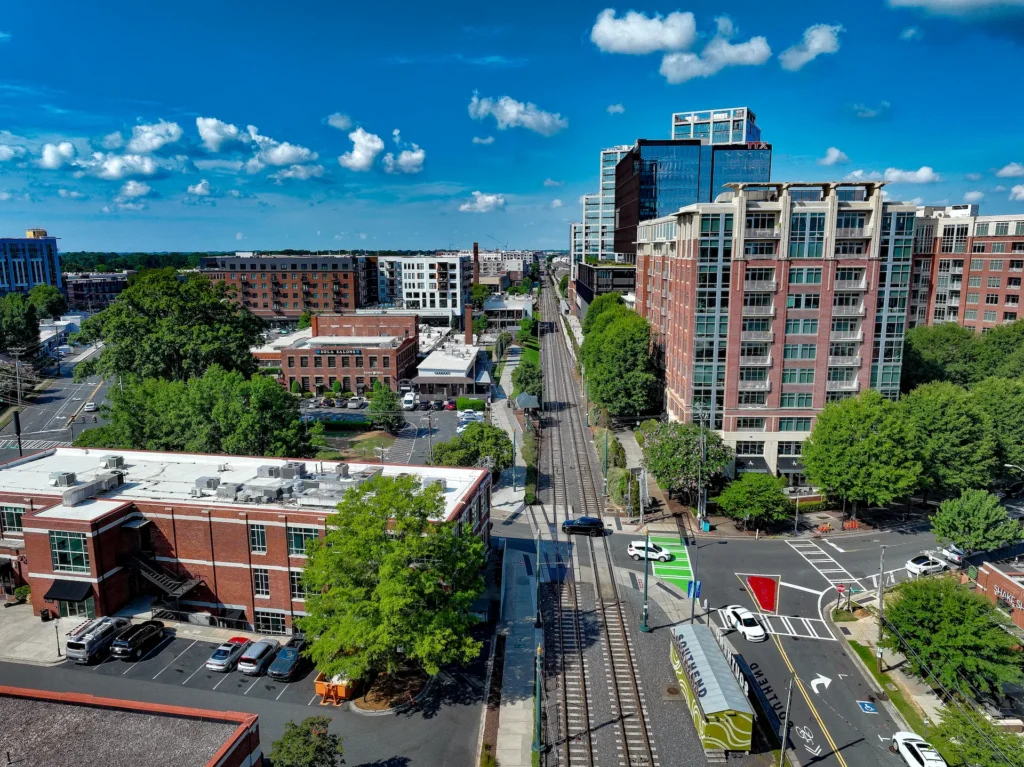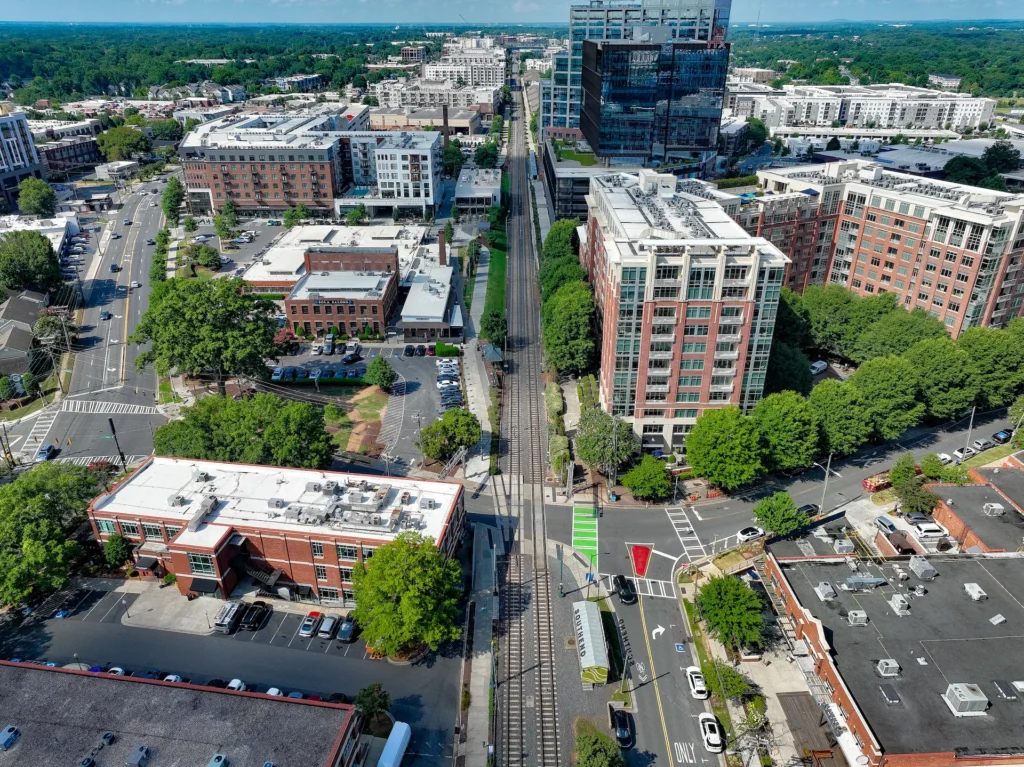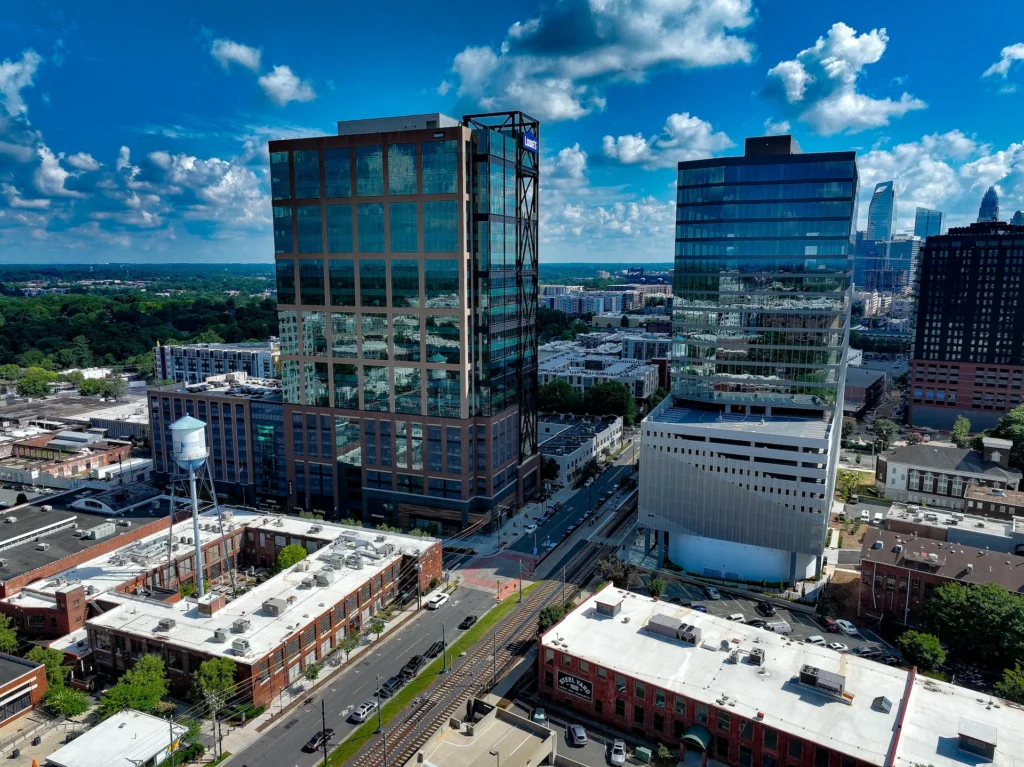When the City of Charlotte and the Charlotte Area Transit System (CATS) was planning the first line of its new Lynx Rail System, a primary goal was to facilitate growth along the rail lines and avoid the transit system serving as a facilitator of urban spawl – which has plagued so many other cities.
American Engineering provided services for the South Corridor Infrastructure Program (SCIP), which included the design of infrastructure improvements to improve pedestrian and vehicle access around light-rail stations and to promote transit-oriented development.
The project included field surveys, conceptual designs, preliminary and final engineering documents, public involvement, and real estate acquisition services for roadway, drainage, water and sewer, landscaping, and park projects.
One of the signature projects, which has become an important and popular resource along the Lynx Blue Line, was the Rail Trail. As part of this project, it started as the initial 7 miles of what has become an 11-mile-long pedestrian / bicycle facility that runs parallel to the light rail. In some places, the Rail Trail is an urban greenway lined with shops, restaurants, outdoor seating, and games. In other places, it transitions to a more modest facility defined by bike lanes and sidewalks. The trail connects to 15 different bicycle routes and multiple major destinations. It has become one of the signature pedestrian and bicycle routes in Charlotte with over 2,000 trail users per day in some locations. – a multi-use path which serves as a linear park through the Southend area and into Uptown Charlotte.
As the prime consultant, American Engineering (under a predecessor named entity), led a group of five major consulting firms. The consultant group worked as a team, in conjunction with a city project manager and six city departments. As a result of this effort, 71 projects were consolidated into 25 design packages for the development of construction plans for a variety of multi-modal transportation improvements.

